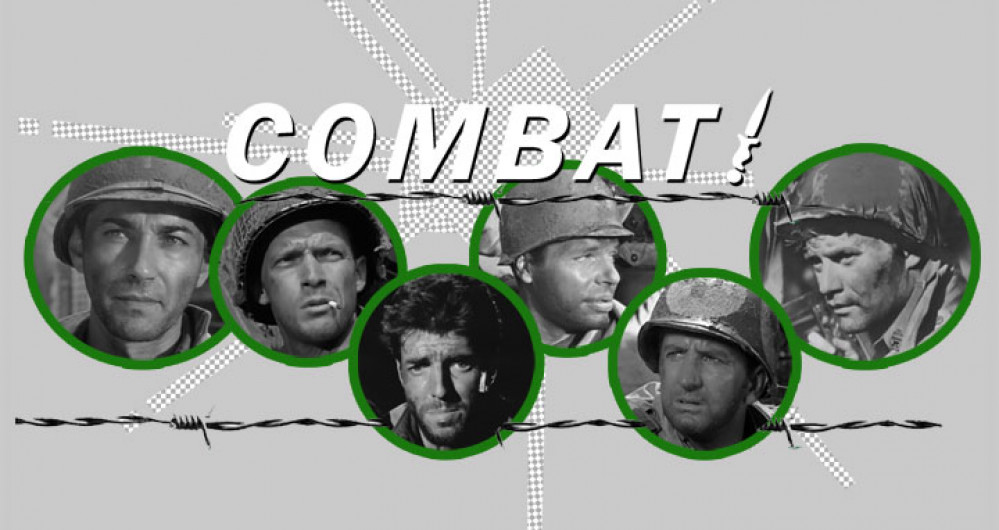
Combat Patrol! My Go at WWII Squad Level Wargaming Rules
Welcome to Combat!
In this book you will find comprehensive rules for fighting the smaller engagements of the Second World War that don’t appear in the movies or story’s like the battles of Stalingrad or El Alamein. This book explores the actions of the Squad and places the player in the position of a Squad leader such as a Sergeant or Corporal. Combat! is a game for 2+ Players.
A game of Combat is normally made up of 2 sides of equal Points. Points is a combination of a Models Experience, Weapons, Equipment and Training. A patrol made up of hardened SS Veterans with STG 44’s is going to have a higher Points cost than a patrol of Volksstrum with Karabiner 98k’s. The Volksstrum can however call on greater amounts of men than the highly trained and valuable men of the SS.
Before the Game
Combat! uses a D10 and you’ll need a few to play, also a table with some terrain, miniatures that are distinguishable from one another, some playing card or tokens, a ruler or tape measure and all the other usual things you would use for tabletop wargaming. It is designed for any particular scale although I will be using 28mm.
When writing a list each of the models are named whether this is in the form of Franz
Schultz or simply Soldier No. 2 is entirely up to the player. The models names are
then written down and placed into a pile which is shuffled. Alternatively each model
may be assigned a Number and Suit from a deck of cards or a token that can be put in a bag, it’s entirely up to the players. The word “Card” will be used in this Rule Set to avoid confusion.
Activation
Combat is mean to simulate the incredibly fast paced combat between two meeting squads and so each activation is only a handful of seconds in real time. The order of activation is also crucial as this represents the initiative of not only the NCO’s but also that of the men under them who would be mostly acting on their own initiative in circumstances like the ones we’re recreating here.
When a Soldier’s Card is drawn he “Activates” for One Action.
The Actions a Soldier must take are:
Run
Combat Move
Take Cover
Fire
Snap Fire
Fire and Combat Move
Combat Move and Fire
Run: A Soldier who elects to run can make a move of Nine Inches that is not slowed by any terrain other than buildings or impassible terrain like Boccage. However if a soldier elects to run through any terrain they must take a “Trip Test” or a “Slip Test” which will be explained later.
Combat Move: A Combat Move is Simply a Six Inch Move. If the Soldier moves through Rough terrain then it counts as double the actual distance moved.
Take Cover: A Soldier that Takes Cover receives a +1 to their cover bonus against all enemies shooting at them from more than Three Inches away. This effect remains in place until the soldier moves. This might seem strange but represents the soldier finding the best possible cover in a given situation rather than hitting the dirt in a panic.
Fire: The Soldier may use One Weapon, rules for which are given later in the book.
Snap Fire: A soldier may not elect to snap fire when his card is drawn. Instead a single soldier may choose to activate with a snap fire any time an enemy soldier moves within sight and range of his weapon. Rather than firing normally remove the Soldier’s card from the deck (this is his activation) and fire his weapon using the Standard Firing Method but he will only hit on a Ten regardless of any modifiers.
Fire and Combat Move: The Soldier may take a Fire Action with a -1 Penalty then make a Three Inch Combat Move.
Combat Move and Fire: The Soldier may make a Three Inch Combat Move then take a Fire Action with a -1 Penalty.
The Big Two
There are Two Major Numbers in a Combat! Units Profile.
Training and Experience – This Represents the Official Training given to a soldier by his military, Unit Leader or other equivalent along with any experience picked up in combat.
Accuracy – Generally how accurate this soldier is with his standard issue service weapon under ideal conditions.
Reaction Tests
Reaction Tests are taken whenever a soldier is shot at and not hit. To Pass a Reaction Test a soldier must roll equal to or over his Training and Experience rating including any modifiers.
If this test is successful then then after the effects of the shooting are resolved the soldier may make a Three Inch Move that must be used to gain cover either equal to or higher than the current cover. Alternatively a model may choose to become pinned using the rules below, in this case it is more like digging in than being pinned but the in game effects are the same.
If the test is failed then the soldier must move to the best available cover within three inches, the final position of the soldier is chosen by the opponent but it must always be in the best cover available. If the unit is already in cover relative to the shooter and/or there is no better cover nearby then the opponent may preposition them up to three inches but may not move them from cover or expose them to the shooting model If no cover is available the soldier is pinned and cannot activate on his next activation. While pinned a soldier gains +1 to their cover modifier that stacks with all others.
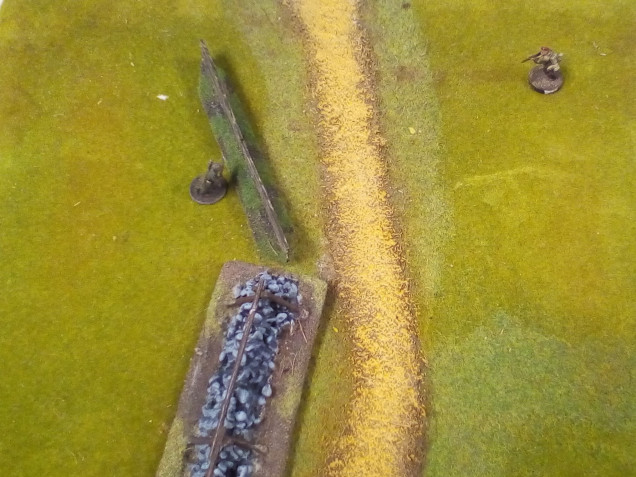 For example a German Soldier behind a wooden fence with a stone wall nearby passes his moral test and so elects to move along the fence to get himself into a better position. If he had failed then he would have had to move behind the stone wall.
For example a German Soldier behind a wooden fence with a stone wall nearby passes his moral test and so elects to move along the fence to get himself into a better position. If he had failed then he would have had to move behind the stone wall.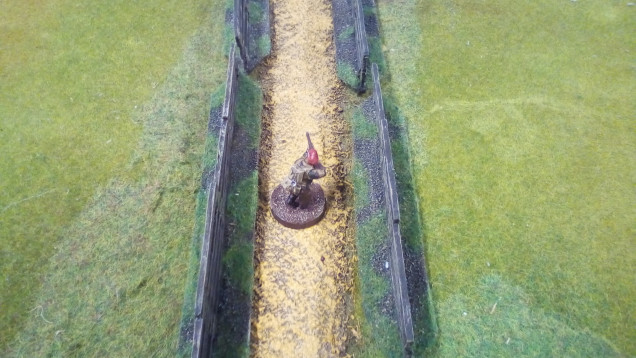 For Example a British Soldier is walking down the middle of a road with two wooden fences to either side. He is shot at by an enemy soldier who is also walking down the centre of the same road, and fails his Cover test. The enemy player can now decide which fence the British soldier takes cover behind since the test was failed.
For Example a British Soldier is walking down the middle of a road with two wooden fences to either side. He is shot at by an enemy soldier who is also walking down the centre of the same road, and fails his Cover test. The enemy player can now decide which fence the British soldier takes cover behind since the test was failed.




























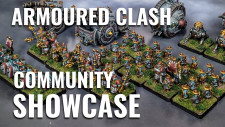











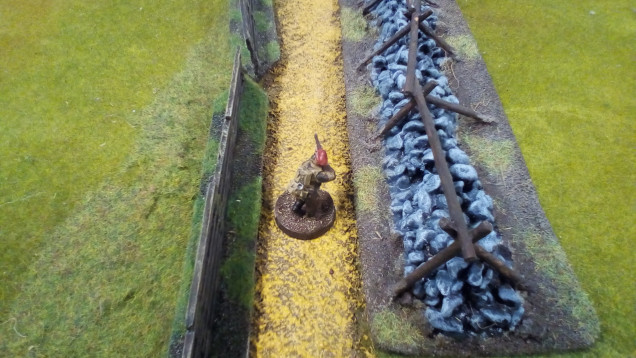

































Leave a Reply